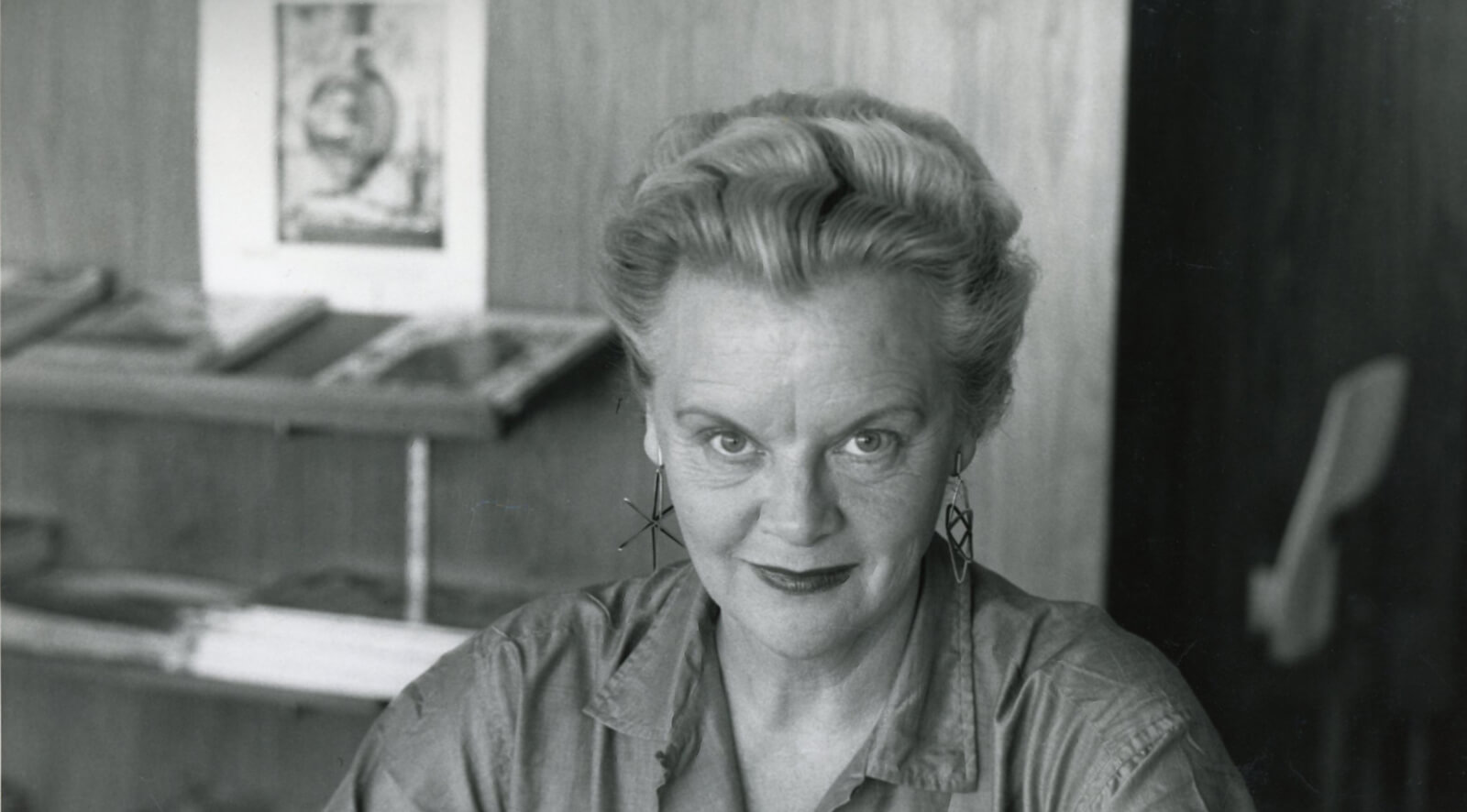Greta Magnusson Grossman
A biography
Greta Magnusson Grossman (1906-1999) maintained a prolific forty-year career on two continents, Europe and North America, with achievements in industrial design, interior design and architecture.
In the late 1920s Grossman finished a one-year woodworking apprenticeship in her hometown of Helsingborg, Sweden and was awarded a scholarship to enroll at Konstfack (then known as Högre Konstindustriella Skolan), the renowned Stockholm arts institution. At Konstfack she excelled in her mastery of technical drawing and focused her original design work on furniture, textiles and ceramics. In 1933 Grossman received second place for furniture design from the Stockholm Craft Association, becoming the first woman to receive an award in that category. In 1934 the Swedish Society of Industrial Design awarded her a scholarship to travel throughout Europe and she filed reports of her observations on interior design and architecture for the “Women and Home” section of the Swedish paper Nya Dagligt Allehanda.
In 1933 Grossman and Konstfack classmate Erik Ullrich opened Studio, a store and workshop, in Stockholm. From Studio, Grossman took on numerous commissions designing unique furniture and interiors, garnered abundant press attention and accolades and exhibited frequently at Galerie Moderne, a cultural mecca in Stockholm at the time. As an entry to a large group exhibition at the Nationalmuseum in Stockholm in 1937, Grossman famously designed a crib for Sweden’s Princess Birgitta that drew much attention in the press. In 1933 she married jazz bandleader Billy Grossman with whom she immigrated to the United States in 1940, settling in Los Angeles.
The unique approach to Swedish modernism that she brought with her when she moved from Stockholm proved to be incredibly popular in the United States. She opened a much-publicized shop in Beverly Hills in 1940 selling her own designs billed on her business card as “Swedish modern furniture, rugs, lamps and other home furnishings.” She attracted celebrity clients such as Greta Garbo, Joan Fontaine and Gracie Allen and began making connections that would lead to a number of projects both from her own shop and from Barker Brothers’ Modern Shop launched in 1947, for whom she was designing exclusive pieces and taking interior design commissions.
Over the next twenty years she produced work for companies like Glenn of California, Sherman Bertram, Martin/Brattrud and Modern Line. The work for Glenn of California is arguably her most sophisticated and best known. These pieces were characterized by the materials she used, such as rich, colorful textiles and woods like California walnut paired in surprising and elegant combination with black plastic laminate and wrought iron. The uniquely petite proportions and asymmetrical lines of her furniture also set her work apart.
In the late 1940s Grossman designed a groundbreaking and successful line of lamps for Barker Brothers, later produced by Ralph O. Smith. These were among the first lamps to employ bullet shaped, directional shades and flexible arms. These lamps were included in the “Good Design” exhibition at the Museum of Modern Art in New York City , as was a chair she designed for Glenn of California.
Grossman’s most enduring work in Los Angeles came in the form of her built architectural commissions. Between 1949 and 1959 Grossman designed at least fourteen homes in Los Angeles, one in San Francisco and one back in her native Sweden. Of these, at least ten are still standing. The homes were often perched on stilts at the top of a hill, overlooking a canyon, with magnificent views through curtain walls of glass. The homes featured extensive built-in shelving and the uniquely open and free flowing floor plan popular at the time. She worked several times with celebrated landscape architect Garrett Eckbo on the outdoor spaces. Grossman’s houses are designed to the diminutive scale of the Los Angeles based Case Study House program — most of them have a footprint of less than 1,500 square feet. Her architectural work, as well as her design work, was featured extensively in Arts & Architecture, the magazine edited by Case Study program founder John Entenza.
Throughout the 1940s and 1950s Grossman’s designs were included in numerous international exhibitions and exhibited at institutions such as The Nationalmuseum (Stockholm, Sweden), Röhsska Museet (Gothenburg, Sweden), Museum of Modern Art (New York, United States), Museum of Industry and Science (Chicago, United States) and the de Young Museum (San Francisco, United States). Articles about her work were published during her career in American, British, French, Italian, Dutch, German, Polish and Swedish magazines and newspapers. In 1952 the United States Department of State distributed an article about her in 75 different countries to present “a true picture…of the American way of life.” In the 1950s Grossman taught industrial design courses at the University of California, Los Angeles and at the Art Center School in Los Angeles. She retired from design and architecture in the late 1960s.
